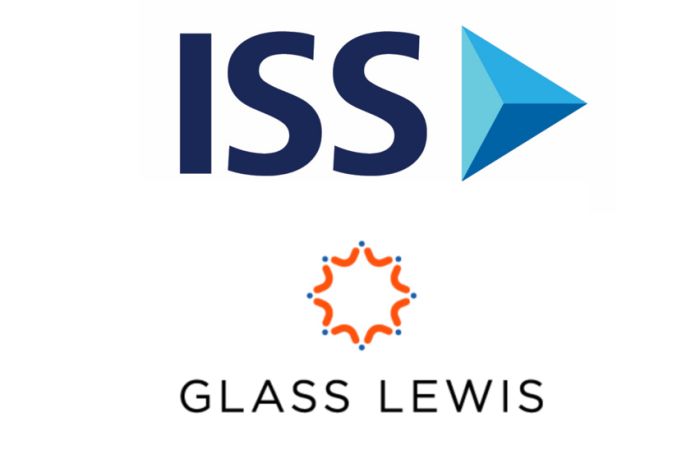A new study reveals both the potential biases in the proxy advisory industry and how a new entrant can help mitigate conflicts of interest.
The 2008 financial crisis revived discussion and interest in the role that regulatory capture has played, both in the dynamics that led to the crisis and in the design of the bank bailouts.
Questions of capture were also raised regarding the private gatekeepers, the Moody’s and S&P duopoly of rating agencies, that gave their seals of approval—AAA ratings—to mortgage-backed securities that turned into toxic assets and brought down the financial system.
There is another private gatekeeper that carries much influence on corporate governance, the independence of boards, management compensation, and many other norms in corporate America and does not usually receive a lot of attention. It is the Proxy Advisory Industry, pioneered 32 years ago by a private company named ISS (Institutional Shareholders Services).
While the capture or the conflicts of interest of credit rating agencies are well studied and documented, the proxy advisory industry has largely escaped research.
Proxy firms provide investors—mainly institutional investors—with research and recommendations regarding issues that are brought to vote in the publicly traded companies that the institutional investors invest in. The term “proxy” stems from the fact that most shareholders do not turn up to vote in person, but are rather represented by third parties via proxy voting. The issues may include executive compensation and corporate governance.
Like the credit ratings market, the proxy advisory market is dominated by two big players: Institutional Shareholder Services (ISS), founded in 1985, and Glass Lewis & Co., founded in 2003. ISS is owned by middle-market private equity firm Vestar Capital Partners, has 18 offices worldwide, 800 employees, and over 1,700 institutional clients. ISS was a monopoly for almost 20 years, until Glass Lewis showed up. The younger firm is owned by the Ontario Teachers’ Pension Plan Board (OTPP) and Alberta Investment Management Corp. (AIMCo), has six offices worldwide, more than 350 employees, and over 1,200 institutional clients.
Conflicts of interest may arise if a proxy firm provides corporate clients with paid services, and at the same time sells proxy services to the institutional investors who invest in these corporations.
As they are private entities, proxy firms are not bound by nearly the same transparency rules as federal or state regulators, thus making data harder to come by.

But nevertheless, Tao Li, Assistant Professor of Finance at the University of Warwick, managed to gain access to data and construct a model that uses a “competition shock” as an exogenous event that reveals both potential biases in the industry and how a new entrant can help mitigate conflicts of interest.
The feature that made this model effective is a major difference between the two big players in the market: while ISS does supply corporate clients with paid services, Glass Lewis sells its advisory services only to the institutional asset managers. Li published his findings in his August 2016 paper “Outsourcing Corporate Governance: Conflicts of Interest within the Proxy Advisory Industry.”
The competition shock in Li’s model occurs when Glass Lewis enters the market and starts covering a company that ISS is already covering. Once this occurs, Li compares ISS’s recommendations to its institutional investor clients before and after Glass Lewis entered the market. He then compares the changes in recommendations regarding companies where there are potential conflicts of interest (possible corporate clients) with recommendations regarding companies that ISS has no potential conflict of interest with (control group). If there is a noticeable change in the recommendations, Li sees it as evidence that the newly-introduced competition helped clear a possible conflict of interest that may have encouraged ISS to provide a recommendation that is favorable to the corporate client.
For example, as the chart below shows, Li finds that after Glass Lewis’s initial coverage ISS’s average “For” recommendation for shareholder proposals at large firms, a proxy for its clients, increases by 11.9 percentage points, compared to control companies. ISS’s negative recommendations for governance-related proposals submitted by management at possible client firms (proxied by large companies) increase by 2.7 percentage points on average after Glass Lewis begins to cover them, relative to control firms.

The chart also describes the effects of Glass Lewis’s initiated coverage on executive compensation plans and capitalization proposals, showing that ISS’s negative recommendations for compensation plans (capitalization proposals) at possible corporate clients (proxied by large firms) grow by 4.3 percentage points (2.9 percentage points) after Glass Lewis begins to cover them, relative to ISS’s non-client firms. Li points out that the magnitude is large, considering that ISS opposes compensation plans and capitalization proposals 19 percent and 12 percent of the times, respectively.
The findings represent an interesting insight. Li did not spot any differential impacts of Glass Lewis’s coverage on large firms versus control companies—the coefficient on the interaction term was small and statistically insignificant. The contrast with governance proposals, compensation plans, or capitalization proposals is not entirely surprising, notes Li—compared to these proposal types, uncontested director elections, especially those for re-appointed directors, tend to be more transparent. Both ISS and Glass Lewis have a set of established guidelines regarding director elections and institutional investors typically have a reasonable expectation on how to vote their shares for these directors. Thus, there may be less room for bias in recommendations without competition.((Li tested the possibility that Glass Lewis’s process for selecting the new companies to cover had itself affected the results but found no evidence for that.))
Interestingly, Li also shows that when firms are targeted by activists in the previous year, the likelihood that ISS’s potential bias occurs drops by almost three percentage points.
These changes might seem somewhat low—11.9, 2.7, 4.3, and 2.9 percentage points in the examples above—yet they can make a difference when votes are close. A famous case in point was HP’s acquisition of Compaq in 2002, which was approved by 838 million votes vs. 793 million who objected. Had 2.7 percent of the votes swayed from the supporters to the naysayers, the deal would not have been approved.
Li also cites academic research that documented the influence proxy advisory firms exert on voting outcomes and estimates that their recommendations sway between 13-30 percent of shareholder votes, depending on the type of proposal.
Hence, Li’s paper finds support for two hypotheses: (1) increased competition lowers the incumbent advisor’s support rate for its corporate clients, compared to non-client firms, and (2) the drop in the incumbent advisor’s support rate for its corporate clients is smaller for proposal types associated with less information asymmetry or importance. This suggests that potential bias in ISS’s recommendations allows managers to enjoy greater private benefits.
His findings can be understood to support a notion that corporations that are reviewed by an actor who also sells them advisory services use these advisory fees as an effective tool for capture. Indeed, this is something that could well be expected, but Li provides evidence.
In fact, it is a little more intricate. One issue, which Li mentions, is that since institutional investors have a fiduciary duty towards their investors, some of them would actually prefer ISS’s advice as it is still the market leader and can provide them with a “certification effect.”
Another is that, at least in some cases, some institutional investors are dependent on the management of the corporations that they invest in as they may choose them (or have already chosen them) for managing their employees’ 401(k) plans as well as other types of investment portfolios. In that case, these institutional investors have every reason to go along with management, and the ISS recommendations are the safe way to do it. In this case, preferring Glass Lewis would not be neutral—it would be counter-productive.
Two other important considerations that were not included in the paper and surfaced during an interview with Li help shed more light on the proxy advisory market.
One is how Li accessed the datasets he needed for the study. Li used two main datasets: ISS’s Voting Analytics database and Glass Lewis’s Proxy Paper database. Li obtained ISS’s voting recommendation directly from ISS. “They tend to provide this data to academics,” he says, “although when I bought it, it wasn’t standard.” But ISS only provided the voting results without the recommendation data. To get the additional information Li turned to an analyst at ISS.
“Once I got the recommendation data,” Li says, “I looked into their compliance document, which says ‘As long as you are an institutional client of ISS, you can check potential conflicts of interest by obtaining a corporate client list from ISS.’” Li was indeed given the list to check such potential conflicts, although he was not allowed to carry out any research based on it.
Another interesting insight on the industry is the competitive dynamics from ISS’s competitors. Li explained: “A few other advisory firms initially were pretty happy about it. This was natural. But then somehow, some of them complained about the potential bad image the findings might create.”
As Li says, the first reaction was to be expected. But the second one, which is the opposite, may be more telling. Here is a possible interpretation: having more time to think things through and perhaps receive feedback from clients, those proxy advisors may have revealed a preference for keeping the market going—in spite of its evident conflicts of interest—over it being free of the conflicts of interest described in the paper, even though the paper found no evidence that they themselves were subject to them. Quite the opposite. In other words: maintaining a potentially sub-optimal situation is, for the competitors, better than capitalizing on its apparent advantage and promoting a better functioning market.






